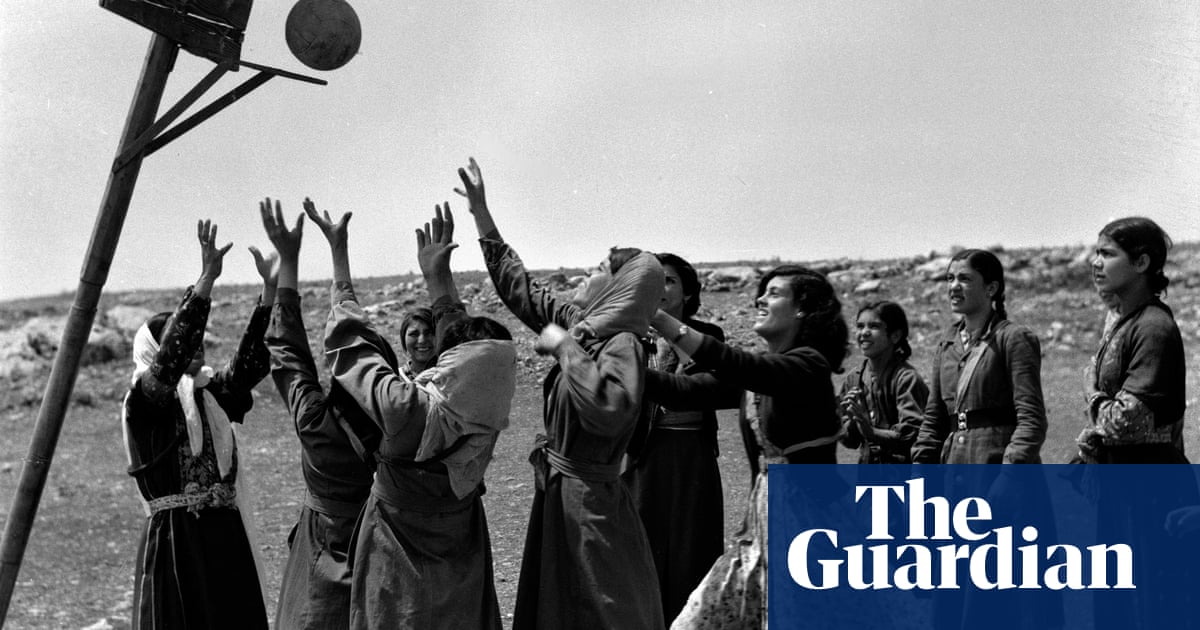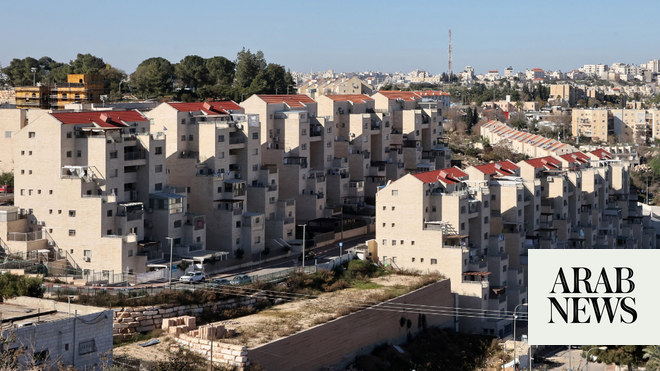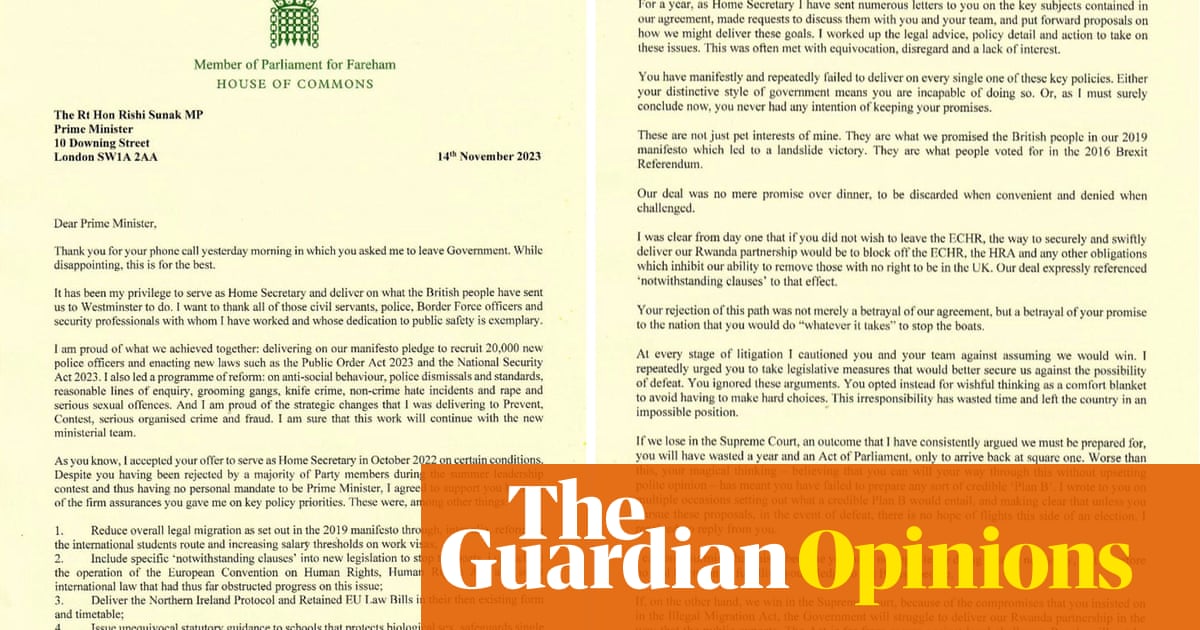
Twenty members of the al-Farra family are gathered for the photo, but no one is smiling for the camera.
The scene is deceptively tranquil as they sit around a bare wooden table under the trees of the Stella Maris monastery on Mount Carmel, high above the port of Haifa. But it is April 1948, and below them the city is under siege and bombardment by the Haganah, the main Zionist paramilitary organisation that later became the core of the Israeli army.
Much of Haifa’s Arab population fled, but the al-Farras stayed put at the monastery. After the city fell and became part of the newly established state of Israel the following month, they returned to their home to find it had been taken over by a Jewish family.
We learn no more of the fate of the al-Farras after 1948 in a new book Against Erasure: a Photographic Memory of Palestine Before the Nakba. But we do see glimpses of the family’s life in the years leading up to the Nakba, Arabic for catastrophe, in which about 750,000 Arabs were forever forced from their homes during the war that followed the partition of Palestine and led to the birth of modern Israel.
Against Erasure is not the first collection of photos from the era of Turkish and then British rule. But in the midst of the bloodiest Israeli attack on Palestinians since the Nakba, with civilians accounting for the majority of the 28,000 dead in Gaza, 2 million people forced from their homes and entire neighbourhoods destroyed alongside schools, hospitals and factories, the book stands as proof of life of a Palestine many in Israel want to pretend never existed.
Against Erasure was first published in Madrid by two Spanish women with experience of the Israeli-Palestinian conflict – Sandra Barrilaro, a photographer, and Teresa Aranguren, a journalist – to push back against an Israeli version of history that not only erased Palestinian society but also works to wipe out its memory. The original title in Spanish translates as Against Forgetting but that was already taken by a poetry book. The English-language publishers settled instead on Against Erasure.
It’s a title that feels more pointed not only because of the present war in Gaza but after years of what Israeli human rights groups describe as the regime of Jewish supremacy in the West Bank intended to erase any possibility of a viable Palestinian state. A system that has worked hard to make Palestinians living under occupation, confined behind the vast and winding West Bank barrier or caged in Gaza, largely unseen by ordinary Israelis except when called up to do their periodic military service enforcing the occupation.
The version of the book in English and Arabic was commissioned for Haymarket by Róisín Davis. “Most people don’t learn about the Nakba in school. They don’t learn about the history of this land, of these people. And they certainly don’t encounter a sense of what Palestine looked like,” she said.
“The book is a visual testament to Palestinian society, to what existed. The power of this book is in the images representing the breadth and richness of Palestinian society before the Nakba, pre-1948. They show a full society, a rich society and an abundant land. They also show the diversity of society which goes a long way to counter the Zionist narrative that it was a land without a people, for people without a land.”
The pages introduce us to the boys of Hebron’s school for the blind in the early 1940s and the staff of the local hospital toward the end of the war. Arab, Jewish and British employees of the Haifa customs department pose on its steps.
There are the kinds of photos that once filled local newspapers. Of football teams, school plays and Boy Scout troops in various kinds of headdress from wide brimmed hats to keffiyehs.
Members of Haifa municipal council - Jews, Arabs and British nationals - line up for an official portrait. A group of women pose for a class photo with their diplomas from teacher training college. In an altogether different picture from 1930, a woman lounges the length of a couch in her evening dress.
We see the work of Karima Abbud, the first female Palestinian professional photographer who ran studios in Jerusalem and Haifa. Two girls from Nazareth pose for her in 1928 with stares that suggest a wariness of the camera.
Many of the pictures were dug out of family archives by the historian Johnny Mansour who lives in Haifa and has spent years collecting oral histories and photographs of the Palestinian experience.
Mansour describes his Palestinian parents fleeing the 1948 war and his childhood in “one of the poorest and most marginalized neighborhoods in Haifa”. He has since spent his life gathering the evidence of what once existed.
“I firmly believe that while the people of Palestine lost their land, they refuse to lose their history. As one of the children, the survivors, of this people, I know how sincere our relationship is with the land, its past, its history, its images, its documents. Taken together, they return to us what we need the most: our homeland,” Mansour writes in the book.
Alongside that, Against Erasure reminds us that Palestine was never free. It was occupied two empires, the Ottoman and then the British, before the Nakba.
One picture captures two men in front of a sign for Imperial Airways at Gaza airport in 1935. Others show the darker side of imperial rule and that the Israeli military was not the first to indulge in collective punishment. We see British army engineers standing amid the rubble of houses in Jaffa destroyed to punish the families of those who took part in the Arab revolt in 1936.
Amid the routines of daily life is the Palestinian realisation that a storm is gathering and the first inklings of the Nakba. Black flags inscribed with “Long Live Palestine” are pictured hanging in the Jerusalem bazaar on the day of the Balfour declaration in 1917 – the British government’s commitment to “a national home for the Jewish people” in the territory just seized from the Ottomans.
Pictures from two decades later capture the Great Revolt over sharply rising Jewish immigration and land ownership, and fears that the British would deliver on the promise of the Balfour declaration.
Against Erasure lists 418 Palestinian villages depopulated during the Nakba and either destroyed or taken over by Jewish residents and given Hebrew names in an act of what the book calls “sociocide” but which might well be described as ethnic cleansing.
In places, the Palestinian population was murdered, perhaps most notoriously in Deir Yassin. The book quotes Jacques de Reynier, the head of the International Committee of the Red Cross delegation, after a visit to Deir Yassin as describing the massacre of Arabs “without any military reason or provocation of any kind; old men, women, children, newly born were savagely murdered with grenades and knives by Jewish troops of the Irgun, entirely under the control of their chiefs”.
The al-Farras were spared that fate but the life they lived before the Nakba, glimpsed on the pages of Against Erasure, was over.
The family clearly liked travelling. Two men are pictured in suits sitting stiffly under stalactites on a trip to Lebanon’s Qadisha caves in 1935 when trains still ran from Palestine to Beirut.
Alongside their picture is a copy of a passport belonging to a member of the family, the pages dotted with visas and border post stamps. It stands as its own testament against erasure. In English, Arabic and Hebrew, the document states that it is a Palestine passport, and that the holder is a Palestinian citizen.
Against Erasure: A photographic memory of Palestine before the Nakba, published by Haymarket Books, and edited by Teresa Aranguren and Sandra Barrilaro, is out now












